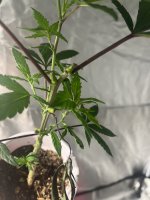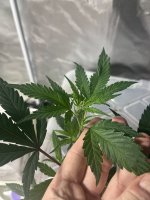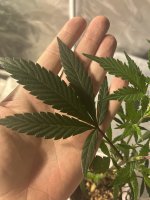Hi everyone,
Induction of polyploidy in diploid plants is a well established technique in horticulture. Although polyploids can occur naturally in many plants, using microtubule inhibitors offers much more control, and selectivity.
This thread is the start of my experimentation in inducing polyploids in clonal cannabis. My ultimate goal is increasing the volatile organic fractions of the plant, and other secondary metabolites. I don’t care too much about THC (within reason). This is not intended to be a guide, rather documentation of my experiments.
To start this off, I took a clone I don’t particularly care about (GH cheese). Here she is with the first sprouts coming off the diploid plant. The mangled leaves are likely of mixed ploidy levels. As the new shoots progress, I will take cuttings from the largest most uniform shoots. The risk here is polyploid plants tend to be less vigorous to than their diploid parents, so one needs to isolate the polyploidy cells asap. One way to do this is through cloning, and the other is through meristem culturing (trying to avoid that if I can). Ploidy level will be analyzed through stomata density, and root tip analysis.
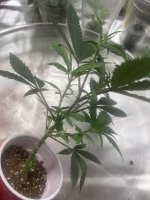
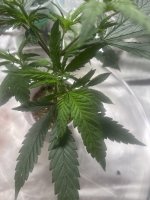
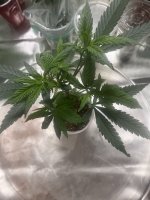
From here I will refine my techniques and apply it to other clones I care about more. Stay tuned!
Induction of polyploidy in diploid plants is a well established technique in horticulture. Although polyploids can occur naturally in many plants, using microtubule inhibitors offers much more control, and selectivity.
This thread is the start of my experimentation in inducing polyploids in clonal cannabis. My ultimate goal is increasing the volatile organic fractions of the plant, and other secondary metabolites. I don’t care too much about THC (within reason). This is not intended to be a guide, rather documentation of my experiments.
To start this off, I took a clone I don’t particularly care about (GH cheese). Here she is with the first sprouts coming off the diploid plant. The mangled leaves are likely of mixed ploidy levels. As the new shoots progress, I will take cuttings from the largest most uniform shoots. The risk here is polyploid plants tend to be less vigorous to than their diploid parents, so one needs to isolate the polyploidy cells asap. One way to do this is through cloning, and the other is through meristem culturing (trying to avoid that if I can). Ploidy level will be analyzed through stomata density, and root tip analysis.



From here I will refine my techniques and apply it to other clones I care about more. Stay tuned!



